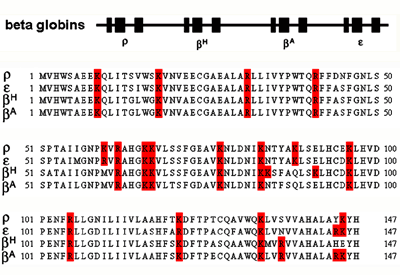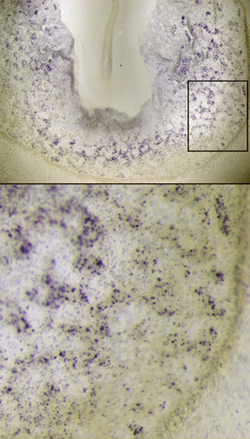| RIKEN Center for Developmental Biology (CDB) 2-2-3 Minatojima minamimachi, Chuo-ku, Kobe 650-0047, Japan |
Now, in a study published in Developmental Dynamics, Cantas Alev and colleagues in the Laboratory for Early Embryogenesis (Guojun Sheng; Team Leader) and other CDB labs have shown through protein analyses that βA is expressed even in the early stage of primitive erythropoiesis in the chicken. Previous reports using classical embryology and molecular biology had suggested that there was a clear separation between primitive (embryonic) and definitive (adult) beta globins, and that the transition between these two stages occurred as early as embryonic day 4 (E4) or as late as day 13. Analysis of mRNA transcripts, in particular, had indicated a switching on and rapid increase of βA expression in the period between days 5 and 7 of embryogenesis. Alev et al., however, took a new approach to the question, first using mass spectrometry to sort out and quantify each of the globins from samples of embryonic blood. In contrast to previous reports indicating that βA expression is first detectable at around E2 (stage HH13 in the Hamburger-Hamilton system for evaluating chicken development), the team found that it is present as early as two days earlier, coincident with the primitive wave of blood development. Looking even earlier, they found signs of βA expression as early as HH8, with significant transcription by HH9. Interestingly, even at this early stage of development, the level of the purportedly “adult” beta globin βA was seen concurrent with that of the “embryonic” ρ subtype (although at a much lower level). In situ hybridization further showed that, by HH10~11, βA beta globin is expressed in the extraembryonic mesoderm as well. The findings from this multi-technique strategy are in general agreement with the scheme in which the transition from primitive (ρ and ε) to definitive (βA) beta globins occurs in the period of E5~7, but pushes back the start point for βA expression to the earliest stage of blood formation, suggesting that the distribution of the various subtypes may be a function of relative abundances rather than strict transcriptional control. “We still don’t know what βA is doing in the primitive stage of hematopoiesis,” admits Alev. “But it’s interesting that the other adult beta globin, βH, is completely undetectable at that stage, so we’d like to try to work out how to account for these difference in the regulation of transcription.”
|
|||||||
|
|||||||
 |
| Copyright (C) CENTER FOR DEVELOPMENTAL BIOLOGY All rights reserved. |

